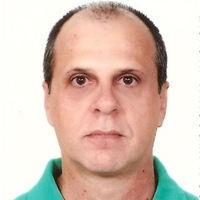Short term effectiveness of extra corporeal shock wave therapy for plantar fasciitis: A systematic review and meta-analysis
Published on: 30th July, 2020
OCLC Number/Unique Identifier: 8644439951
Background: The argument on whether extracorporeal shock-wave therapy (ESWT) is beneficial in short- term intervention in adults with plantar fasciitis. It is important and necessary to conduct a meta-analysis to make a comparatively more reliable and overall assessment of the outcomes of ESWT in the less than 6 months.
Methods: We conducted a systematic review and meta-analysis of randomized control trials from MEDLINE, EMBASE and CINAHL databases from 2000 to 2020. Randomized trials that evaluated extracorporeal shock wave therapy used to treat plantar heel pain were included. Trials comparing an extra corporeal shock wave therapy with control/placebo were considered for inclusion in the review. We independently applied the inclusion and exclusion criteria to each identified randomized controlled trial, extracted data and assessed the methodological quality of each trial.
Results: Four studies involving 645 patients were included. 3 RCTs (n = 605) permitted a pooled estimate of effectiveness based on overall success rate and composite score of visual analogue scales for pain at follow-up 1 (12 weeks). The pooled data showed no significant heterogeneity at the three-month follow-up (p - value of chi-square = 0.61, p = 0.74 and I2 = 0%). The shock wave group had a better success rate than the control group at the three-month follow-up (OR = 2.26, 95% CI = 1.62-3.15, p - < 0.00001). For reduction of pain the pooled data showed no significant heterogeneity (p - value of chi-Square 0.28 and I2 22%). There were significant differences between the ESWT and control groups for all follow-up visits (random-effect model, three trials, MD = 15.14, 95% CI = 13.86 to 16.42, < 0.00001 at three-month).
Conclusion: A meta-analysis of data from three randomized-controlled trials that included a total of 605 patients was statistically significant in favor of extracorporeal shock wave therapy at follow-up 1(12 weeks).
Extracorporeal Shock Wave Combined with Traditional Chinese Medicine Bone-setting Manipulation for External Humeral Epicondylitis: A Randomized Clinical Trial
Published on: 23rd July, 2024
Objective: The purpose of this study was to evaluate the clinical efficacy of extracorporeal shock waves combined with traditional Chinese medicine bone-setting manipulation for external humeral epicondylitis. Methods: Ninety-two patients with external humeral epicondylitis were randomly divided into an observation group and a control group. Patients in the control group were treated with extracorporeal shock waves while those in the observation group with traditional Chinese medicine bone-setting manipulation based on the control group. Patients in both groups were evaluated by the Visual Analogue Scale (VAS), Mayo Elbow Performance Score (MEPS), and Disabilities of the Arm, Shoulder, and Hand Questionnaire (DASH) before and after treatment. The inflammatory factors such as IL-6, IL-10, TNF-ɑ, and clinical outcomes were contrasted before and after treatment. Results: There were statistically significant differences in VAS score, MEPS score, and DASH score between the two groups before and after treatment (p < 0.05). The observation group exhibited a more pronounced improvement in each score compared to the control group. Post-treatment, the inflammatory factors of both groups were significantly lower than pre-treatment levels (p < 0.05), with the observation group showing a more noticeable decrease. The overall effectiveness of the observation group was higher than that of the control group, and the difference was statistically significant (p < 0.05).Conclusion: The combination of extracorporeal shock wave therapy and traditional Chinese medicine bone-setting manipulation can effectively alleviate pain symptoms and improve dysfunction caused by external humeral epicondylitis, while also reducing inflammatory factor expression. This combined treatment may prove more effective than extracorporeal shock wave therapy alone.Clinical Trial: Registration: ChiCTR2200066075.
















